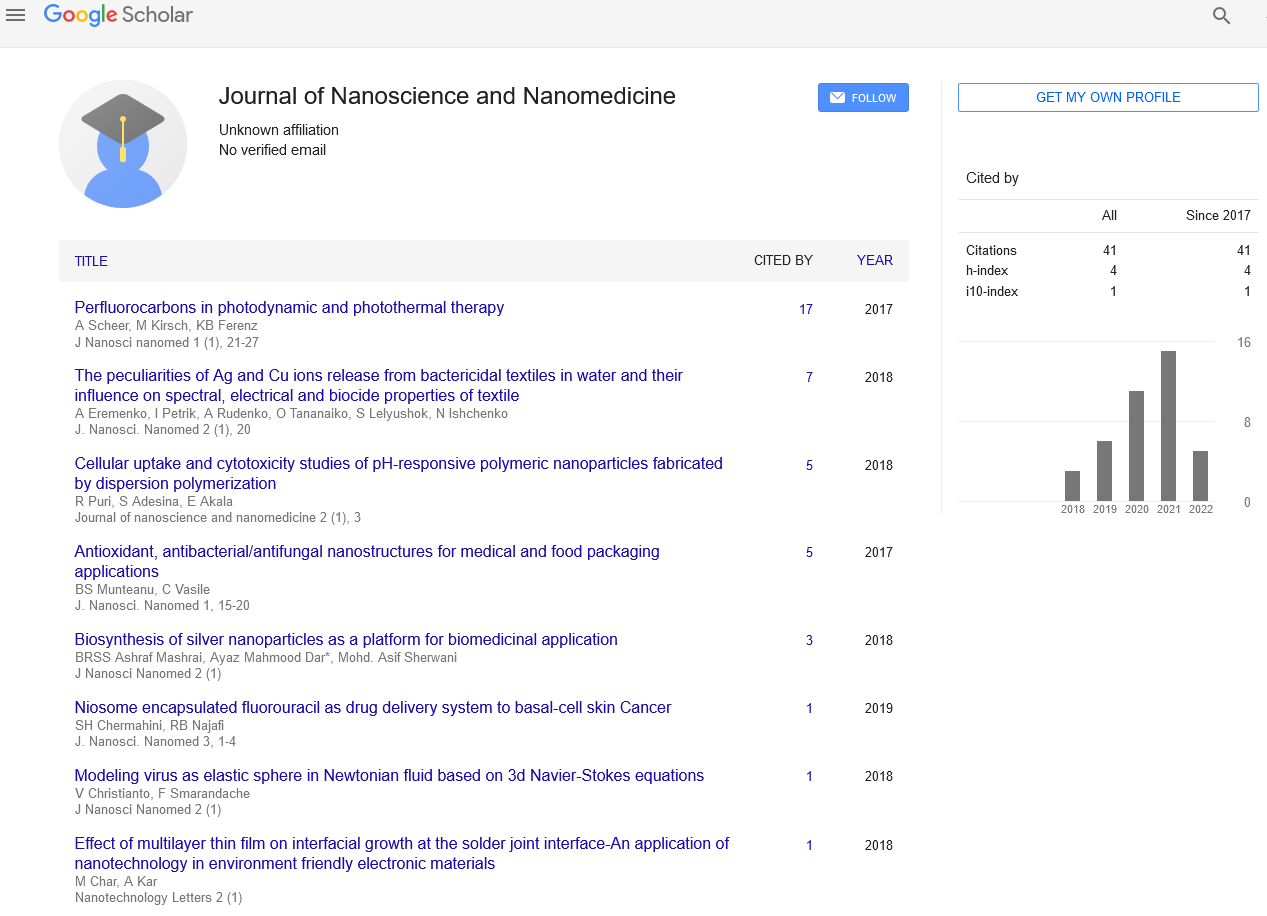Nanoparticle’s toxicology and clinical potential
Received: 07-Mar-2022, Manuscript No. PULJNN-22-4528; Editor assigned: 09-Mar-2022, Pre QC No. PULJNN-22-4528 (PQ); Accepted Date: Mar 08, 2022; Reviewed: 23-Mar-2022 QC No. PULJNN-22-4528 (Q); Revised: 24-Mar-2022, Manuscript No. PULJNN-22-4528 (R); Published: 31-Mar-2022, DOI: 10.37532/puljnn.22.6(2).03-04
This open-access article is distributed under the terms of the Creative Commons Attribution Non-Commercial License (CC BY-NC) (http://creativecommons.org/licenses/by-nc/4.0/), which permits reuse, distribution and reproduction of the article, provided that the original work is properly cited and the reuse is restricted to noncommercial purposes. For commercial reuse, contact reprints@pulsus.com
Abstract
Nanoparticles (NPs) have become more widely used in technology, research, and medicine in recent years. The exploitable biological activities are assumed to be based on the tiny particle size along with their unique chemical and physical characteristics. We take a look at some of the most recent toxicity studies on NPs with clinical relevance. The cha- -lenge of transferring knowledge acquired from cell-based investigations into a human setting is examined, as well as the mechanisms of cytotoxicity. The so-called 'proof-of-principle' approach, in which ultra-high NP concentrations are used to ensure cytotoxicity, is evaluated on the basis of two factors: first, the concentrations used are in no way related to the actual doses required, which, in many cases, discourages further important research
Perspective
When compared to the parent bulk materials, nanoparticles have a significant surface area to volume ratio, which results in a change in biological activity. Because of their wide variety of biological uses, such as drug administration, imaging, and cell tracking, the usage of nanoparticles (NPs) in experimental and clinical contexts has increased significantly in the last two decades. This emphasises the need of considering not just the use of NPs, but also the possibly unanticipated and harmful effects of human exposure to them. In this context, NP toxicity refers to the particles' capacity to disrupt the normal structure of organs and tissues in people and animals, as well as their ability to severely alter normal physiology. Although the specific mechanism is uncertain, current research shows that cytotoxicity is linked to oxidative stress and pro-inflammatory gene activation. The provided dosage, method of administration, and extent of tissue dispersion appear to be critical aspects in nano-cytotoxicity, in addition to particlerelated considerations.
To investigate dose-related cellular or tissular toxicity, cellbased toxicity studies typically utilise escalating dosages of the NP. These dose–response relationships are used to establish safe particle concentration limits for in vivo delivery. Despite extrapolating in vitro concentrations into in vivo scenarios, which can be divided into two points: first, it has yet to be determined how efficiently any administered NP dose reaches the target tissue, and second, NPs. With the potentially devastating effects in mind, new methods for forecasting as-yet-unpredictable, non-dosagedependent NP activities in vivo are needed. Apart from the dosage problem, another aspect of nanotoxicity that has received less attention is the route of particle delivery, which can impact toxicity in a negative way irrespective of the dose. It is reasonable to predict that the biodistribution, accumulation, metabolism, and excretion of NPs, as well as their toxicity, will alter depending on the route of administration. There have been no studies that have looked into the relationship between various methods of administration and NP toxicity. In the medical field, NPs have a lot of promise as drug and gene delivery vehicles, fluorescent labels, and contrast agents. At least one of the material dimensions of a particle must fall within the size range of 1–100 nm for it to be considered a "genuine" NP. Because of their capacity to preferentially target cancer cells, improve effectiveness, and minimise systemic toxicity, NPs are increasingly being used as drug carrier systems, notably for chemotherapeutic medicines. Gold NPs (AuNP) have a number of advantages, including a non-toxic and biocompatible metal core, which makes them an excellent starting point for nanocarrier systemsFurthermore, AuNP may be surface functionalized with a variety of moieties, including medicines and targeting agents, making them a highly flexible tool for targeting .
Lipid-based, polymer-based, and biological NPs are examples of therapeutic nano-vehicles that have already been used in clinical trials. Another form of NP is quantum dots (QDs), also known as semiconductor nanocrystals, which have a wide range of potential therapeutic uses, including cell labelling, in vivo imaging, and diagnostics . Because of the QD's excellent photophysical features, including as broad absorption spectra paired with a restricted emission spectrum, numerous emission colours may be triggered concurrently by a single wavelength, allowing for multiplexed detection of molecular targets. The expanding use of many forms of NPs in biomedicine raises worries about their increased access to human tissues and organs, as well as the possible harmful consequences. NPs have the potential to revolutionise medical imaging, diagnostics, and treatments, as well as carry out functional biological processes, due to their tiny size and physical similarities to physiological molecules such as proteins. However, these characteristics may be at the root of their toxicity. Toxicity can also vary in intensity based on the manner of administration and the areas of deposition. As a result, information on toxicity is given using a system-based approach that focuses on experimental lung, cutaneous, liver, and brain targets to retain clinical relevance.





